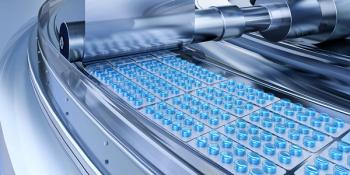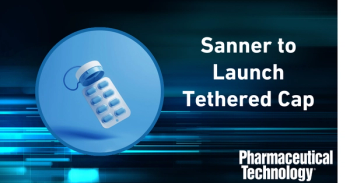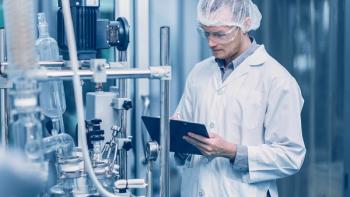
- Pharmaceutical Technology-07-02-2014
- Volume 38
- Issue 7
Automating Online Sampling of Bioprocesses
The Modular Automated Sampling Technology platform allows sampling of bioreactors.
Unlike in the chemical and food industries, and even in small-molecule pharmaceutical manufacturing, which have well-established methods for automated online sampling, the biopharmaceutical sector remains in need of a reliable system that transfers bioprocess samples directly from bioreactors to analytical devices while maintaining process sterility. Such a system is necessary if biopharmaceutical companies are to effectively take advantage of process analytical technology (PAT) and gain a more fundamental understanding of what is happening within bioreactors. While on-line Raman and dielectric spectroscopy provide some insight, there remains a need for integration of this data with off-line measurements, such as cell density, viability, metabolite levels, and titers.
To overcome this issue, Bend Research (part of Capsugel Dosage Form Solutions), in collaboration with major biopharmaceutical companies, including Pfizer, Eli Lilly, and Boehringer Ingelheim, has developed the Modular Automated Sampling Technology (MAST) platform. MAST consists of a sterile sampling system, a sample scheduler and navigator for automated sampling and delivery of samples to various analytical instruments, and a data-management system for collecting and analyzing the results, and if desired, providing feedback to the bioreactor for direct adjustment of reaction conditions.
Sterile sampling
The heart of the MAST platform is the new sterile sampling unit referred to as the Sample Pilot, which consists of a sampling module and an associated programable logic controller (PLC). There are two Sample Pilot modules, the SP100, which collects 50-mL samples for monitoring of pilot- and commercial-scale manufacturing operations, and the SP200, which takes incremental 5-mL samples for analysis of development-scale reactions and reactions that run in smaller laboratory-scale bioreactors and pilot-scale, single-use bioreactors. Each sample assembly consists of proprietary valves and a pump and is designed to draw samples from the bioreactor and push them out to user-defined destinations, according to Clint Pepper, a director at Bend Research. “Because we use positive displacement, rather than pulling the samples out with a vacuum, it is possible to deliver even viscous culture samples with high cell densities to analytical instruments more than 50 feet away.”
Importantly, both systems can be sterilized in place (SIP), autoclave-sterilized, or gamma-sterilized depending on the model selected. “The entire system can be cleaned and sanitized between each sampling, and there is flexibility for users to adapt various cleaning procedures depending on their specific needs,” notes Lisa Graham, senior vice-president of Bend Research.
Sample and data management
To maximize the potential of sterile biopharmaceutical sampling, the MAST platform design includes software systems for managing sample scheduling, delivery of the samples, processing of the analytical results, and adjustment of bioreactor parameters if desired. The MAST Sample Scheduler and Navigator modules will work together to facilitate sample collection from bioreactors and transfer to analytical testing systems.
The MAST Data Management system will maintain information on sampling activities and analysis results and has the ability to automatically adjust the feed rate of the bioreactor to meet desired growth rates according to the current condition of the cells. “With this data management system, it is possible to significantly reduce the time needed to process large sets of analytical results. Information on the state of cells and the process is obtained more rapidly, ” Pepper asserts.
On-line measurement combined with at-line analysis
Early studies at Pfizer have shown that automated at-line measurements obtained using the MAST system are similar to those obtained when using manual samples. The MAST platform has been incorporated with on-line analytical technologies to deliver overall cell-level “observability” and “guidance,” according to Graham. In one case, dielectric spectroscopy measurements were corrected to more accurately estimate total and viable cell density. Off-line measurements of Caspase-3 activation were related to on-line measurements of the variation in the capacitance due to the reduction in cell viability following staurosporine addition. This information was used to determine cell health in the bioreactor in real time. In another example, the amount of off-line data that was collected (Raman spectroscopy) was greatly increased due to the ability to more frequently collect samples automatically and without the need for an operator. The data were used to build robust process-monitoring models and develop a Raman system for laboratory use, according to Graham. “In this case,” she observes, “the Sample Pilot serves as enabling technology for the implementation of PAT.”
Demonstrated performance
The steam-sterilized SP100 module has been successfully demonstrated in five different bioreactors in three different facilities. “During recent development runs on pilot-scale bioreactors, the MAST platform and SP100 successfully delivered more than 480 samples without contamination, including more than 200 cumulative days of successful operation at the 30-L to 500-L scales in both cell culture and microbial applications,” reports Pepper. “The sanitant-sterilized SP200 module has been deployed in five different facilities ranging in scale from bench reactors to large-scale, single-use bioreactors. The SP200 units have collected over 2000 samples in more than 240 accumulative days of operation with no contamination or loss of sample integrity.”
MAST systems have been placed in nine client facilities (15 total units installed) with more than 2400 sterile samples collected without loss of sterility. “The major MAST product modules have moved out of the beta testing stage and are being sold to early adopters as pre-commercial products,” says Pepper.
Next enhancements
New MAST technologies are still being beta tested, including a module to automatically remove cell from the whole broth, leaving the clear supernatant. This module would send clear samples to analytical devices that require cell-free samples, such as liquid chromatographs and mass spectrometers, so that these instruments can be integrated for real-time data collection and processing.
In the near future, Bend Research plans to install the first multiplexed MAST system capable of collecting samples from up to eight bioreactors and sending those samples to as many as four analytical devices. “This solution should gain a lot of traction in the laboratory setting where banks of bioreactors are running at the same time,” says Pepper.
Enabling process control
The MAST platform offers the ability to collect reproducible samples more frequently and automatically without operator involvement, which reduces the risk of contamination and operator exposure. The ability to integrate analytical results from numerous sources provides more insight into cell behavior and the impact of process parameters, enabling the use of more sophisticated process-control strategies.
“Our intention with the MAST platform is to help biopharmaceutical companies gain insight into what actually occurs in a bioreactor by providing a means for understanding how bioprocess variables affect overall product quality,” comments Graham. “We believe that by coupling the right tools, the MAST platform provides in-depth guidance for optimization of the reactor environment in order to meet cell needs for the production of the target product. Ultimately, we hope that the MAST platform will provide the meaningful real-time analytics, process measurements, and novel data management techniques that will enable the development of predictive control models that in turn will drive increased product consistency and batch-to-batch reproducibility,” she concludes.
About the Author
Cynthia A. Challener, PhD is a contributing editor to Pharmaceutical Technology.
Articles in this issue
over 11 years ago
Trends in Manufacturing and Equipmentover 11 years ago
The Mainstreaming of Continuous Flow API Synthesisover 11 years ago
Health Systems Raise the Bar on Reimbursing New Drugsover 11 years ago
Data Integrityover 11 years ago
Environmental Monitoring System Improves Efficiencyover 11 years ago
Sieve Shakers Ensure Reliabilityover 11 years ago
Laboratory Filter-Dryer Enables Scalabilityover 11 years ago
Sterilization of Blow-Fill-Seal Equipment for Aseptic FillingNewsletter
Get the essential updates shaping the future of pharma manufacturing and compliance—subscribe today to Pharmaceutical Technology and never miss a breakthrough.




